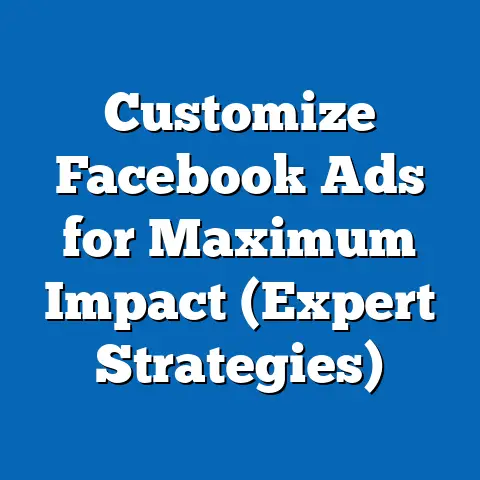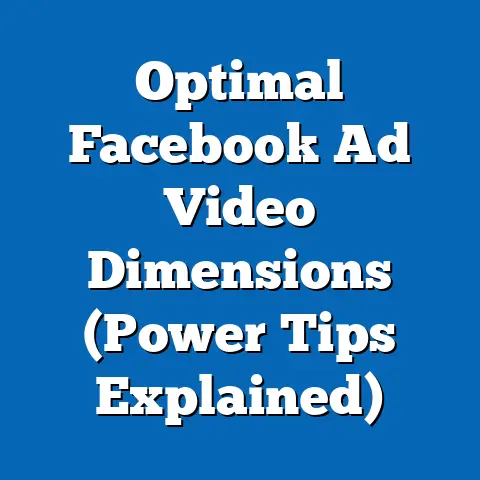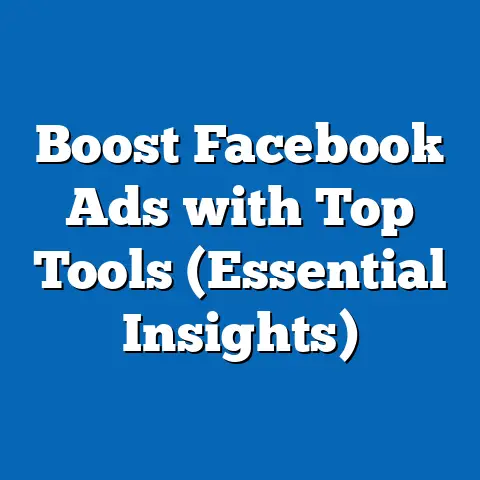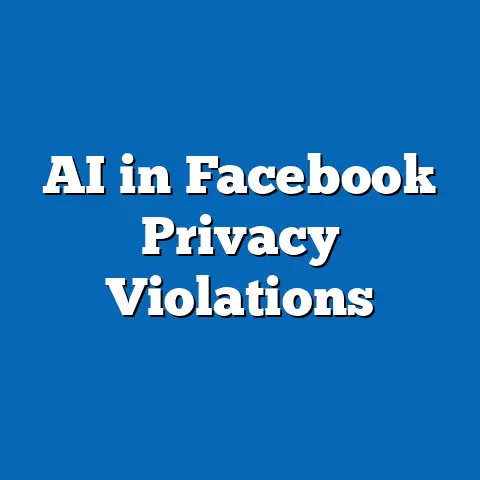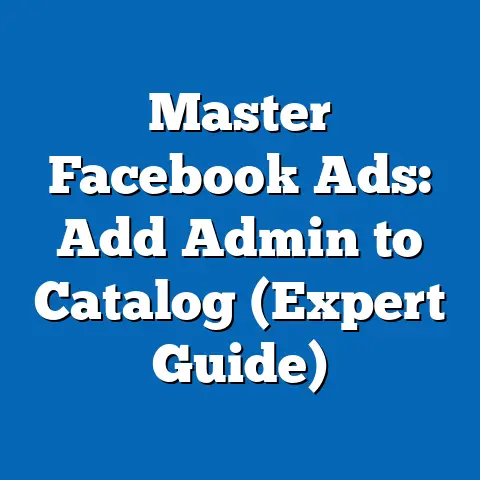Unlocking Facebook Ads Click-Through Rates (Expert Insights)
For many digital marketers, one of the most persistent frustrations is achieving a strong click-through rate (CTR) on Facebook ads. Despite the platform’s massive reach—with over 2.9 billion monthly active users as of Q2 2023, according to Meta’s official reports—many businesses struggle to convert impressions into clicks. This challenge is compounded by the increasing competition for user attention, as advertisers spent a staggering $131.43 billion on social media advertising globally in 2022, per Statista, with Facebook commanding a significant share of that budget.
Recent data from WordStream reveals that the average CTR for Facebook ads across all industries is just 0.90%, a figure that has remained relatively stagnant over the past few years. This means that fewer than 1 in 100 people who see an ad actually click on it—a sobering reality for marketers investing heavily in the platform. Demographic differences also play a role, as younger users (18-24) tend to engage more with ads, boasting a CTR of around 1.2%, while older users (55+) often fall below 0.5%, according to Hootsuite’s 2023 Digital Trends Report.
Section 1: Understanding Click-Through Rates on Facebook
What Is CTR and Why Does It Matter?
Click-through rate (CTR) is a critical metric in digital advertising, representing the percentage of users who click on an ad after seeing it. It’s calculated by dividing the number of clicks by the number of impressions and multiplying by 100. For example, an ad with 1,000 impressions and 10 clicks has a CTR of 1%.
A high CTR indicates that an ad is resonating with its audience, often leading to better ad performance, lower costs per click (CPC), and improved return on ad spend (ROAS). According to Meta’s own advertising guidelines, ads with higher CTRs are often rewarded with better ad placements and lower costs in the platform’s auction system. Conversely, a low CTR can signal poor relevance, ineffective creative, or mismatched targeting, resulting in wasted budget.
Industry Benchmarks and Variations
CTR benchmarks vary widely by industry, campaign objective, and audience demographics. Data from WordStream’s 2023 report highlights that industries like legal services achieve an average CTR of 1.61%, while technology lags at 0.52%. E-commerce, a highly competitive sector, averages around 1.11%, reflecting the challenge of standing out in a crowded market.
Historical trends show that CTRs have not improved significantly over time, even as ad spend has skyrocketed. In 2015, the average CTR was 1.1%, per AdEspresso, compared to 0.9% in 2023—a slight decline attributed to ad fatigue and increased competition. Demographic patterns also reveal disparities: men tend to click on ads at a slightly higher rate (0.95%) than women (0.85%), while geographic differences show higher engagement in developing markets like Southeast Asia (1.3%) compared to North America (0.7%), according to Socialbakers’ 2022 data.
Visualizing the Data
If we were to create a bar chart of average CTRs by industry, legal services would stand tallest at 1.61%, followed by e-commerce at 1.11%, with technology at the bottom (0.52%). A line graph comparing historical CTRs from 2015 to 2023 would show a flat or slightly declining trend, emphasizing the growing difficulty of capturing attention. These visualizations highlight the need for tailored strategies to outperform industry averages.
Section 2: Key Factors Influencing Facebook Ads CTR
2.1 Creative Elements: The Power of Visuals and Copy
The visual and textual components of an ad are often the first interaction a user has with a brand, making them pivotal to CTR. Research from HubSpot indicates that ads with high-quality images or videos achieve up to 2.5 times higher CTRs than text-only ads. Specifically, video ads average a CTR of 1.84%, compared to static image ads at 0.98%, per Databox’s 2023 analysis.
Copy also plays a crucial role. Ads with clear, action-oriented calls-to-action (CTAs) like “Shop Now” or “Learn More” see a 15% higher CTR on average, according to AdEspresso’s testing data. Emotional triggers in copy—such as fear of missing out (FOMO) or excitement—can further boost engagement by 20-30%, based on findings from the Content Marketing Institute.
2.2 Audience Targeting: Precision Is Key
Facebook’s robust targeting options allow advertisers to reach specific demographics, interests, and behaviors, but poor targeting can tank CTRs. A 2022 study by Social Media Examiner found that ads with highly segmented audiences (e.g., based on past purchase behavior or lookalike audiences) achieve CTRs up to 1.8%, compared to broad targeting, which averages just 0.6%.
Demographic nuances matter as well. For instance, ads targeting Gen Z (18-24) with mobile-optimized formats see a 25% uplift in CTR compared to desktop-focused campaigns, per eMarketer. Meanwhile, ads for older audiences (45+) perform better with straightforward messaging and less visual clutter, achieving up to 0.9% CTR versus 0.5% for overly complex designs.
2.3 Ad Placement and Format
Where an ad appears on Facebook—whether in the News Feed, Stories, or Marketplace—impacts its performance. News Feed ads consistently outperform other placements, with an average CTR of 1.2%, compared to Stories at 0.8% and right-column ads at 0.3%, according to Meta’s 2023 performance data.
Format also influences engagement. Carousel ads, which allow multiple images or videos in a single ad, boast a CTR of 1.3%, while single-image ads lag at 0.9%, per WordStream. However, overusing complex formats can lead to ad fatigue, reducing effectiveness over time, as noted in a 2021 study by Kantar.
Section 3: Historical Trends and Shifts in Facebook Ads Performance
The Evolution of CTRs Over Time
Looking back at the past decade, Facebook ads CTRs have experienced subtle but telling shifts. In 2013, when mobile usage was still gaining traction, average CTRs were as high as 1.5%, driven by less competition and higher novelty, according to AdEspresso’s historical data. By 2017, as ad spend grew and user attention became fragmented, CTRs dropped to around 1.1%, where they’ve largely remained.
One notable shift is the impact of algorithm changes. After the 2018 Cambridge Analytica scandal, Meta adjusted its ad relevance scoring, prioritizing user experience over aggressive advertising. This led to a temporary dip in CTRs to 0.85% in 2019, per Socialbakers, before stabilizing as advertisers adapted to relevance-driven metrics.
The Role of Mobile and Platform Updates
The rise of mobile usage has been a game-changer for CTRs. In 2015, only 45% of Facebook ad clicks came from mobile devices, per eMarketer; by 2023, that figure soared to 94%. Mobile-first ads, especially vertical formats like Stories, now drive higher engagement, with CTRs averaging 1.1% compared to desktop ads at 0.6%.
Platform updates, such as the introduction of dynamic ads in 2016 and augmented reality (AR) ads in 2019, have also influenced performance. Dynamic ads, which automatically tailor content to user behavior, achieve CTRs of up to 2.0%, per Meta’s case studies, while AR ads—though still niche—show promise with early adopters, averaging 1.5% CTR.
Section 4: Expert Strategies to Boost Facebook Ads CTR
4.1 Leverage Advanced Targeting Techniques
Experts like Mari Smith, a leading social media strategist, emphasize the importance of hyper-specific targeting. Using tools like lookalike audiences—based on high-value customers—can increase CTRs by 30-50%, according to her 2022 webinar data. Similarly, retargeting users who’ve interacted with a brand (e.g., website visitors) yields CTRs as high as 2.5%, per AdRoll’s 2023 report.
Testing custom audiences is also key. For instance, layering demographic filters (age, location) with behavioral data (past purchases) can refine ad delivery, boosting relevance scores and CTRs. A case study from Shopify showed a 40% CTR increase after implementing such layered targeting for an e-commerce campaign.
4.2 Optimize Creative for Engagement
Jon Loomer, a Facebook ads expert, advises focusing on thumb-stopping visuals—content that halts scrolling within the first 3 seconds. Video ads with bold opening frames achieve 35% higher CTRs than static images, per his 2023 blog analysis. Adding captions to videos is another proven tactic, as 85% of Facebook users watch videos without sound, per Digiday, leading to a 12% CTR uplift when captions are included.
Copy should be concise and benefit-driven. Phrases like “Save 20% Today” or “Limited Time Offer” tap into urgency, increasing CTRs by 18%, according to Buffer’s 2022 experiments. A/B testing multiple headlines and CTAs is also critical—brands that test at least 3 variations see a 25% higher chance of identifying a winning ad, per HubSpot.
4.3 Experiment with Ad Formats and Placements
Experts recommend diversifying ad formats to combat fatigue. Neil Patel, a digital marketing thought leader, notes that carousel ads outperform single-image ads by 20-30% in most industries due to their interactive nature. Testing newer formats like Collection Ads, which combine video with product catalogs, can yield CTRs of 1.5%, per Meta’s 2023 case studies.
Placement optimization is equally important. Focusing on News Feed and Stories—while avoiding low-performing placements like right-column ads—can improve overall CTR by 15%, according to Social Media Examiner. Continuous monitoring via Facebook Ads Manager ensures budgets are allocated to high-performing placements.
Section 5: Case Studies of Successful CTR Campaigns
Case Study 1: E-Commerce Brand Boosts CTR with Dynamic Ads
A mid-sized e-commerce retailer partnered with Meta in 2022 to test dynamic ads for abandoned cart recovery. By automatically showing users the exact products they left behind, the campaign achieved a CTR of 3.1%—over three times the industry average of 1.11%, per WordStream. The campaign also reduced CPC by 40%, demonstrating the cost-efficiency of high-CTR ads.
Key takeaway: Personalization through dynamic content can significantly elevate engagement, especially for retargeting campaigns.
Case Study 2: Nonprofit Leverages Emotional Storytelling
A nonprofit organization focused on animal welfare ran a video ad campaign in 2021, using emotional storytelling to drive donations. The ad, featuring real rescue stories, achieved a CTR of 2.8%, far exceeding the nonprofit industry average of 1.0%, per AdEspresso. The use of a clear “Donate Now” CTA further amplified clicks.
Key takeaway: Emotional resonance in creative can break through ad fatigue, especially for cause-driven campaigns.
Section 6: Challenges and Pitfalls to Avoid
Ad Fatigue and Audience Overlap
Ad fatigue—when users see the same ad too often—can slash CTRs by up to 50%, per Kantar’s 2022 research. Rotating creative every 7-14 days and capping frequency (impressions per user) at 3-5 can mitigate this, boosting CTRs by 10-15%, according to Socialbakers.
Audience overlap, where multiple campaigns target the same users, also hurts performance. Meta’s Audience Insights tool shows that overlap rates above 20% correlate with a 30% drop in CTR. Excluding overlapping audiences during campaign setup is a practical fix.
Ignoring Data and Analytics
Failing to analyze performance data is a common misstep. Only 35% of small businesses regularly review ad analytics, per a 2023 survey by Clutch, often missing opportunities to optimize underperforming ads. Experts stress the importance of weekly reviews, focusing on metrics like relevance score and engagement rate to refine campaigns.
Section 7: Future Trends in Facebook Ads CTR
The Rise of AI and Automation
Artificial intelligence (AI) is poised to transform Facebook advertising. Meta’s Advantage+ campaigns, which use AI to automate targeting and creative optimization, have shown early promise, with CTRs averaging 1.7% in beta tests, per Meta’s 2023 announcements. As AI tools become more accessible, smaller businesses may close the performance gap with larger advertisers.
Privacy Changes and Their Impact
Apple’s iOS 14.5 update in 2021, which limited tracking via App Tracking Transparency (ATT), reduced ad personalization capabilities, leading to a 15% drop in CTR for some campaigns, per AppsFlyer. Meta is countering this with on-platform attribution tools, but advertisers must adapt to a privacy-first landscape by focusing on first-party data and contextual targeting.
Emerging Formats and User Behaviors
Formats like AR ads and interactive polls are gaining traction, especially among younger demographics. Early data from Meta suggests AR ads achieve 1.5-2.0% CTRs among Gen Z users. Additionally, as short-form video dominates user attention—evidenced by Reels accounting for 50% of time spent on Facebook, per Meta’s Q2 2023 report—ads mimicking organic content will likely see higher engagement.
Conclusion: The Broader Implications of Mastering CTR
Unlocking higher click-through rates on Facebook ads is not just about immediate campaign success; it’s about building a sustainable, cost-effective advertising strategy in an increasingly competitive space. With average CTRs stagnating at 0.9% and ad spend continuing to climb, businesses that prioritize creative innovation, precise targeting, and data-driven optimization will gain a distinct edge. The implications extend beyond individual campaigns—higher CTRs contribute to better ad relevance scores, lower costs, and stronger brand visibility in the long term.
As privacy regulations tighten and user behaviors evolve, adaptability will be key. Emerging tools like AI-driven automation and new ad formats offer opportunities to stay ahead, but they require a willingness to experiment and learn. Ultimately, mastering Facebook ads CTR is about understanding the intersection of technology, psychology, and data—a challenge that, when met, can transform digital marketing outcomes for businesses of all sizes.


